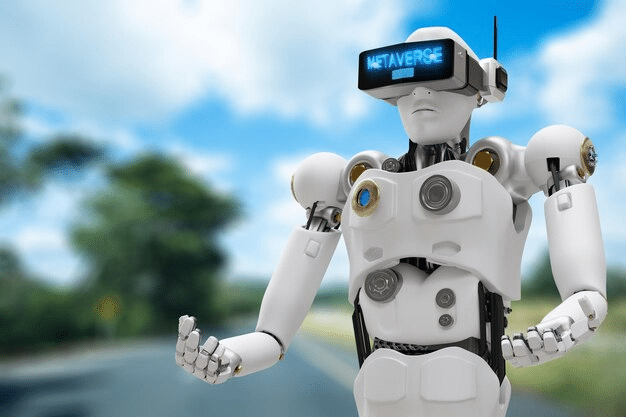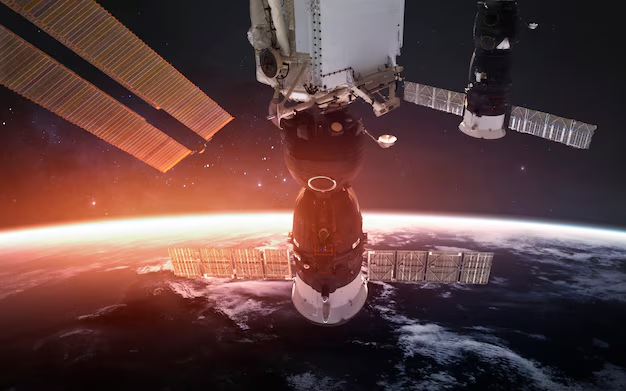Space exploration has always captured humanity’s imagination, driving innovation and pushing the boundaries of what is possible. From landing on the Moon to exploring distant planets and sending probes to the edge of our solar system, the pursuit of knowledge beyond Earth continues to evolve. In the coming decades, cutting-edge technology is set to revolutionize space exploration, enabling humanity to reach further and understand the cosmos in ways previously thought impossible. This article delves into the future of space exploration, the technological breakthroughs making it possible, and the profound impact it could have on science, industry, and everyday life.
The Current Landscape of Space Exploration
Space exploration has entered an exciting era marked by collaboration between government space agencies, private companies, and international organizations. Key players like NASA, European Space Agency (ESA), SpaceX, Blue Origin, and China National Space Administration (CNSA) are spearheading missions to explore the Moon, Mars, and beyond.
Notable achievements in recent years include:
- The success of the James Webb Space Telescope (JWST), which is uncovering insights into the origins of the universe.
- SpaceX’s Starship program, aimed at enabling interplanetary travel.
- Ongoing robotic missions like NASA’s Perseverance rover exploring Mars.
- Plans for the Artemis program, which aims to return humans to the Moon by 2025 and establish a sustainable lunar presence.
Despite these milestones, many challenges remain, such as improving propulsion technology, ensuring crew safety, and developing sustainable methods for long-duration space missions.
Technological Innovations Shaping the Future of Space Exploration
1. Advanced Propulsion Systems
Propulsion technology is one of the most critical components of space exploration. The traditional chemical rockets that powered missions like Apollo are effective but limited in efficiency and range. Cutting-edge alternatives include:
- Ion Propulsion: Uses electricity to accelerate ions, offering greater fuel efficiency for deep-space missions.
- Nuclear Thermal Propulsion (NTP): Promises faster travel times to Mars by using nuclear reactors to heat propellant and create thrust.
- Solar Sails: Utilize sunlight for propulsion, providing a virtually unlimited fuel source for lightweight spacecraft.
These advanced systems could drastically reduce travel times and enable missions to distant planets, asteroids, and even interstellar destinations.
2. Autonomous Robotics and AI

Autonomous robots and AI are transforming how we explore space. With the challenges of distance and communication delays, future missions will rely heavily on intelligent systems capable of making real-time decisions. Examples include:
- Rovers and Drones: Next-generation rovers equipped with AI will explore planets, asteroids, and moons more efficiently. NASA’s Ingenuity drone on Mars demonstrates the potential of aerial exploration.
- Spacecraft Navigation: AI-powered navigation systems will optimize trajectories and ensure precise landings on challenging terrains.
- Astronaut Assistance: Robots like Astrobee on the International Space Station (ISS) assist astronauts with tasks, reducing workload and improving safety.
3. Space Habitats and Life Support Systems
Establishing a human presence beyond Earth requires the development of sustainable habitats and reliable life support systems. Innovations in this area include:
- 3D-Printed Habitats: Using in-situ resources like lunar regolith to construct habitats reduces the need for transporting building materials from Earth.
- Closed-Loop Systems: Advanced life support systems that recycle water, air, and waste are essential for long-duration missions to Mars and beyond.
- Radiation Protection: New materials and shielding technologies are being developed to protect astronauts from harmful cosmic radiation.
These advancements will pave the way for colonies on the Moon, Mars, and other celestial bodies.
4. Space Mining and Resource Utilization
Space exploration is shifting towards a more sustainable model by utilizing resources found in space. Key developments include:
- Asteroid Mining: Extracting valuable resources such as water, metals, and rare elements from asteroids could support both in-space activities and Earth-based industries.
- Lunar Resource Utilization: The Moon’s surface contains resources like water ice, which can be converted into fuel and oxygen for missions.
- In-Situ Resource Utilization (ISRU): Technologies that extract and process materials on-site will reduce reliance on Earth-based supplies.
By leveraging local resources, space missions can become more cost-effective and self-sufficient.
5. Breakthroughs in Communication Technology
As missions venture further into space, communication systems must evolve to handle greater distances and data loads. Innovations include:
- Laser Communication: Offers significantly higher data transfer rates than traditional radio waves, enabling real-time HD video streams from deep-space missions.
- Quantum Communication: Provides unparalleled security for transmitting sensitive information between spacecraft and Earth.
- Interplanetary Internet: Developing a reliable communication network for interplanetary missions will be essential for future Mars colonies and beyond.
These technologies will ensure seamless connectivity for scientific research, navigation, and operational support.
6. Human Spaceflight and Health Innovations
Ensuring the safety and health of astronauts is a top priority for human spaceflight. Emerging technologies include:
- Biometric Monitoring: Wearable devices that track astronauts’ health in real-time and detect early signs of illness or fatigue.
- Artificial Gravity: Rotating habitats or centrifuge systems designed to mimic Earth’s gravity could mitigate the harmful effects of long-term weightlessness.
- Medical Advances: Portable medical devices and telemedicine will enable astronauts to manage health issues during extended missions.
These innovations are vital for enabling deep-space exploration and safeguarding astronauts on multi-year journeys.
The Impact of Cutting-Edge Space Exploration
1. Expanding Scientific Knowledge
Space exploration drives fundamental scientific discovery. Missions to Mars, Europa, and other celestial bodies may uncover clues about the origins of life and the possibility of extraterrestrial ecosystems. Meanwhile, telescopes like JWST are providing insights into the formation of galaxies, stars, and planets.
2. Advancing Earth-Based Technologies
Many technologies developed for space exploration find applications on Earth. For example:
- Satellite technology supports global communication, weather forecasting, and disaster response.
- Material science innovations improve everything from construction materials to consumer electronics.
- Medical breakthroughs, such as telemedicine, benefit from research conducted in microgravity environments.
3. Economic Growth
The commercialization of space is creating new economic opportunities. Companies like SpaceX and Blue Origin are reducing launch costs, making space accessible to a broader range of stakeholders. The burgeoning space tourism industry is poised to become a significant economic driver, while resource mining and satellite deployment will create new markets.
4. Inspiring Future Generations
Space exploration serves as a source of inspiration, encouraging young minds to pursue careers in science, technology, engineering, and mathematics (STEM). The excitement surrounding missions to Mars or the search for habitable exoplanets has the power to galvanize global interest in science and innovation.
Challenges Ahead
While the future of space exploration is bright, significant challenges remain:
- High Costs: Despite advancements, space exploration remains expensive, requiring sustained investment from governments and private entities.
- Ethical and Legal Issues: Questions about the ownership and exploitation of space resources, as well as the environmental impact of space activities, must be addressed.
- Technical Risks: Space missions are inherently risky, with failures potentially costing billions of dollars and putting lives at risk.
Conclusion
The future of space exploration is poised to be a transformative journey driven by cutting-edge technology. Advances in propulsion, robotics, resource utilization, and communication are enabling humanity to explore further, faster, and more sustainably than ever before. As we venture into this new frontier, the potential for discovery, innovation, and collaboration is limitless. From unraveling the mysteries of the universe to building a multi-planetary civilization, space exploration is not just about reaching the stars—it is about redefining what is possible for humanity.
FAQs
1. What is the next big milestone in space exploration?
The next major milestones include the return of humans to the Moon under NASA’s Artemis program and the first crewed mission to Mars, which is targeted for the late 2030s.
2. How does AI help in space exploration?
AI aids in autonomous navigation, data analysis, and decision-making for spacecraft and rovers, enabling them to perform tasks without constant human intervention.
3. Will space tourism become common in the future?
Yes, as companies like SpaceX, Blue Origin, and Virgin Galactic reduce costs, space tourism is expected to become more accessible to the public within the next decade.
4. What are the benefits of asteroid mining?
Asteroid mining could provide valuable resources like water, metals, and rare elements, supporting in-space activities and potentially supplementing Earth-based industries.
5. How will space exploration impact life on Earth?
Space exploration drives technological innovation, improves global connectivity, expands scientific knowledge, and inspires advancements in fields like medicine, energy, and materials science.


